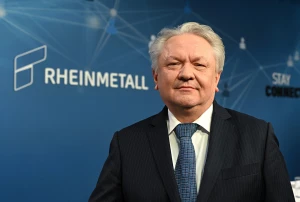
Ukrainian Armed Forces reaching Melitopol and Mariupol now will be triumph: weekly military results
The Ukrainian Armed Forces are forcing Russian troops to deploy reserves without knowing the exact location of the breakthrough. When the direction is determined, rapid offensive actions will begin and the main forces will enter
Ukrainian offensive in the south: the main direction of the attack will be determined in the coming weeks
The Ukrainian Defense Forces have initiated actions along a front line spanning over 200 kilometers. We take June 4 as the starting point of the offensive. Now the Ukrainian Armed Forces continue to shape the battlefield to maximize the likelihood of a breakthrough in certain areas. The main goal is to overcome several Russian defense lines, cut off the supply lines that feed the Russian group, inflict maximum damage on the enemy and liberate the occupied territories. Earlier this week, the Ukrainian military announced the recapture of 7 villages in southeastern Ukraine. Most of them are located on the border between Zaporizhzhia and Donetsk regions, which is about 100 square kilometers of liberated territory. Everyone says that the counteroffensive is progressing gradually but steadily. In the south, we have 3 areas where the Ukrainian Armed Forces are testing the enemy's defense. These are the Melitopol direction, the Berdiansk direction and the Mariupol direction. The General Staff reports on developments in these 3 areas.
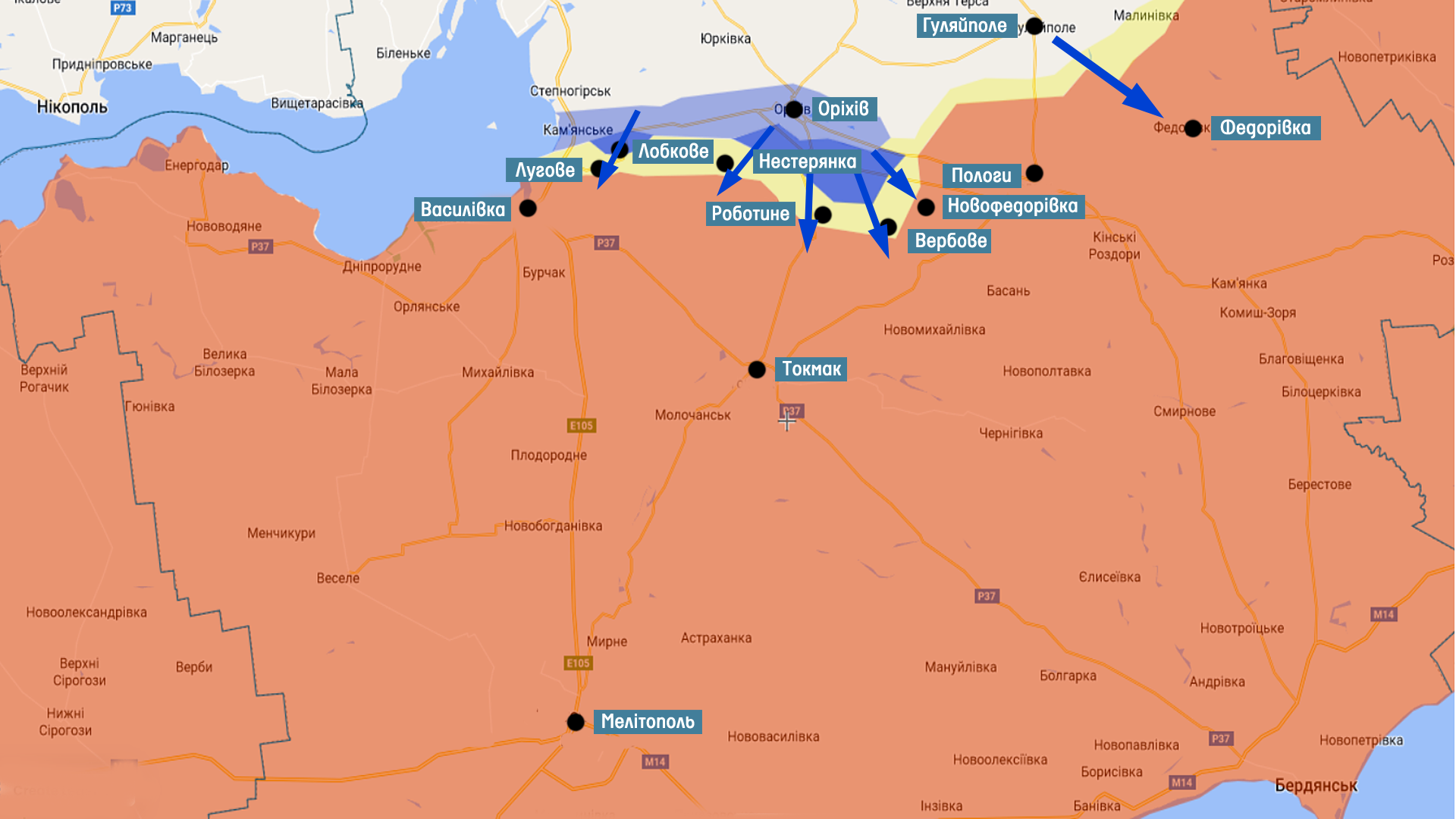
In the Melitopol direction, the fighting is stretched from Lobkove towards Pyatykhatky. This is a crucial but challenging direction, as it allows for further progression towards Vasylivka and potentially Enerhodar. In other words, in the long run, we will be able to resolve the issue of encircling Zaporizhzhia NPP. In the Orikhiv direction, the fighting continues along the Robotyne line and beyond. However, there have been no significant advances, as the enemy has reinforced their positions in that area. The main direction is coming from Velyka Novosilka. The Ukrainian Armed Forces are engaged in hostilities around Makarivka, where Russian troops are attempting to halt the advance of Ukrainian forces and are deploying reserves to these areas. Now the Defense Forces are fighting in brigades and battalions, and the enemy is forced to allocate reserves to counter the Ukrainian offensive.

When we talk about Mariupol and Berdiansk, we need to understand the logic of the Ukrainian Armed Forces' actions. The railroad line from Tokmak to Donetsk runs through the dominant heights. By gaining control of these heights, the Ukrainian units can disrupt enemy logistics in the future. Controlling any segment of this railroad would significantly complicate the situation for Russian forces, and with the use of long-range strike systems, it could even lead to the severing of the corridor to Crimea, including the Sea of Azov. If Ukrainian forces manage to reach Melitopol and Mariupol, it would undoubtedly be a significant achievement. Even advancing halfway through the width of the occupied territories would mark an important initial step in exerting further pressure on the occupying forces and reclaiming Ukrainian territory.
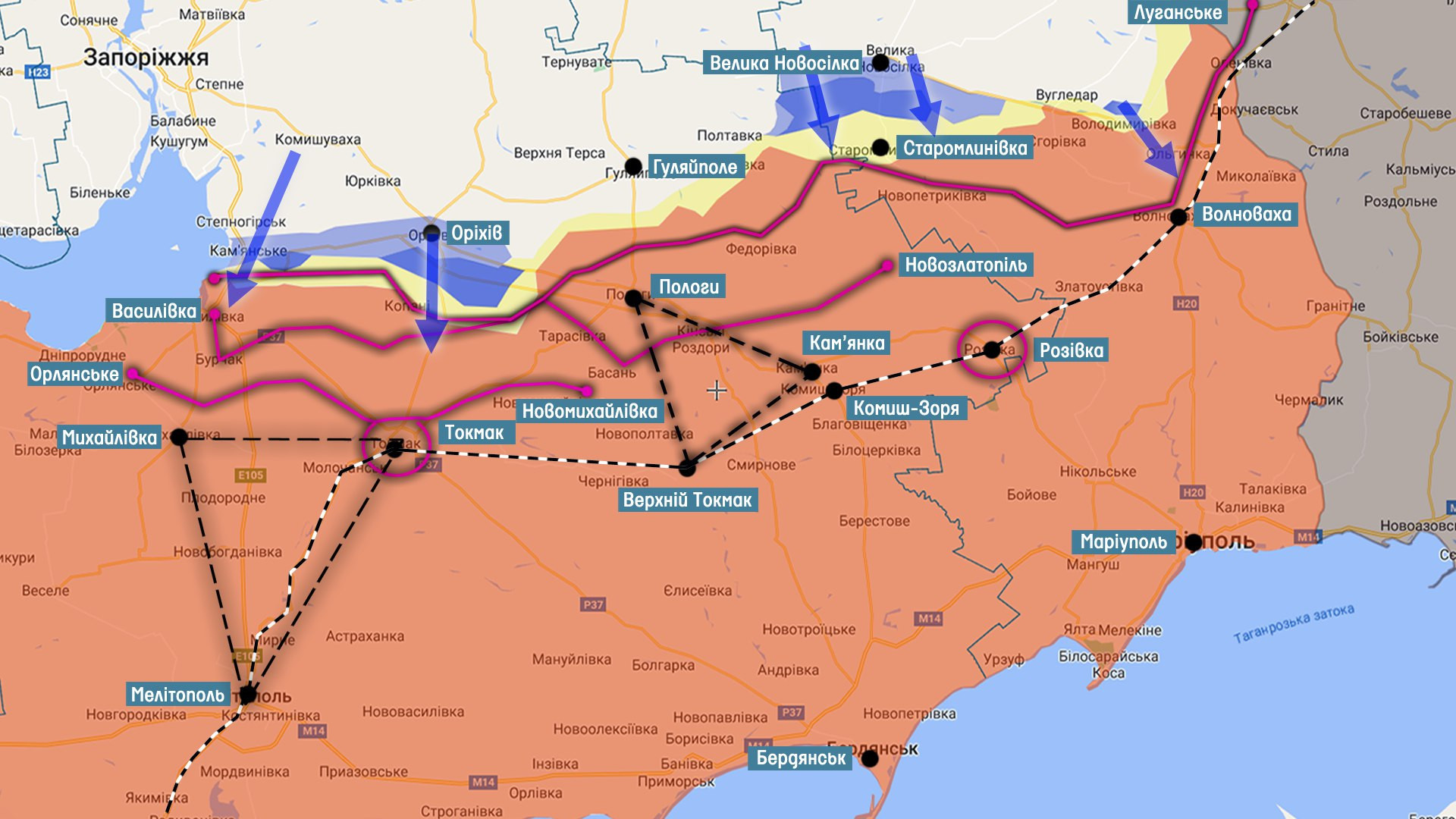
Currently, it is difficult to evaluate the level of success or failure of our actions as we are dealing with a breakthrough in the Russian-prepared defense. We have managed to recapture settlements from the enemy, but there are still two more defense lines approximately 10 kilometers away. The Ukrainian Armed Forces' operations have inflicted significant losses on the enemy. There is information suggesting that General Goryachev, the Chief of Staff of the 35th Army, has been killed, which indicates a potential impact on the effectiveness of their command structure.
The Ukrainian army is currently in the preparatory stage of the battlefield in the areas of attack. Our aim is to disrupt the enemy's defense, entice their reserves closer to the first line of defense, and then destroy them using artillery. This strategy is designed to confuse the enemy and prevent them from accurately determining the main direction of our attack. Once the direction is determined, we will initiate rapid offensive actions with the entry of our main forces. At present, our focus is on creating conditions that force the enemy to pull up reserves without knowing where the decisive breakthrough by the Ukrainian army will occur.
We are seeing an increase in the number of destroyed Russian artillery systems, reconnaissance, air defense, and electronic warfare systems. In my opinion, these are accompanying actions to weaken the centers of gravity of the Russian army, complicate command and control, and make combat operations more effective. Despite facing active hostilities, Russian forces are still attempting to exploit their own capabilities. They are now actively mining the ground, and are using aviation more - army helicopters to fight our armored vehicles. Currently, both sides are experimenting with new tactical approaches, seeking to leverage their advantages to exhaust the enemy. This period of tactical exploration may extend over several weeks and play a crucial role in determining the direction of our main attack.
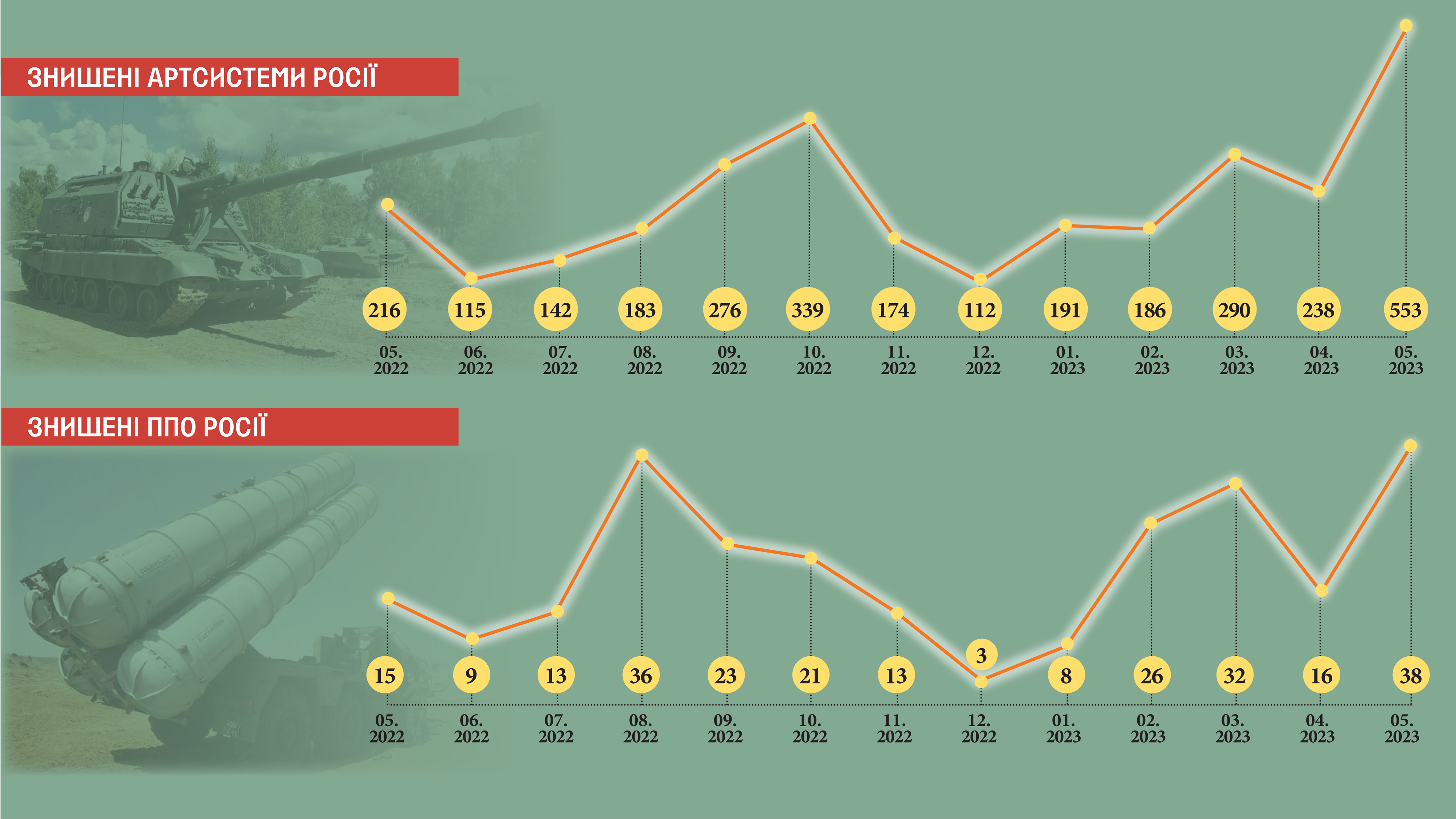
Kherson region, Ramstein and the new direction of the fighting in Bakhmut
In the Kherson direction, Russian troops resorted to blowing up the dam of the Kakhovka hydroelectric power plant in order to disrupt our plans and transfer some of their combat-ready units to the Zaporizhzhia direction. Approximately four to six brigades, totaling 12,000 to 15,000 personnel, were deployed to reinforce reserves and hold the second and third lines of defense, as forces are being shifted to the first line.
The enemy has withdrawn its forces and artillery systems 15 kilometers away. This direction may appear to be safer, but the ground there is starting to dry out a little. I believe that the Ukrainian Defense Forces will exploit any opportunity to pose challenges for the enemy from this direction as well.
Bakhmut is no less important now than it was before. First of all, because it constrains significant enemy forces, and it still serves this mission. Today, General Syrskyi, the commander of the Ukrainian Land Forces, visited Bakhmut. He thanked the brigades defending the city and announced that the Ukrainian Armed Forces are adapting their plans in response to the fierce resistance from the occupying forces. What did he mean? Russia has started to deploy reserves, particularly airborne units, towards the Bakhmut direction. We have made progress in the direction of Berkhivka, while the contact line in the Klishchiivka area remains unchanged. Russian troops are employing intensive artillery fire and conducting air strikes on our positions, as highlighted by General Syrskyi.
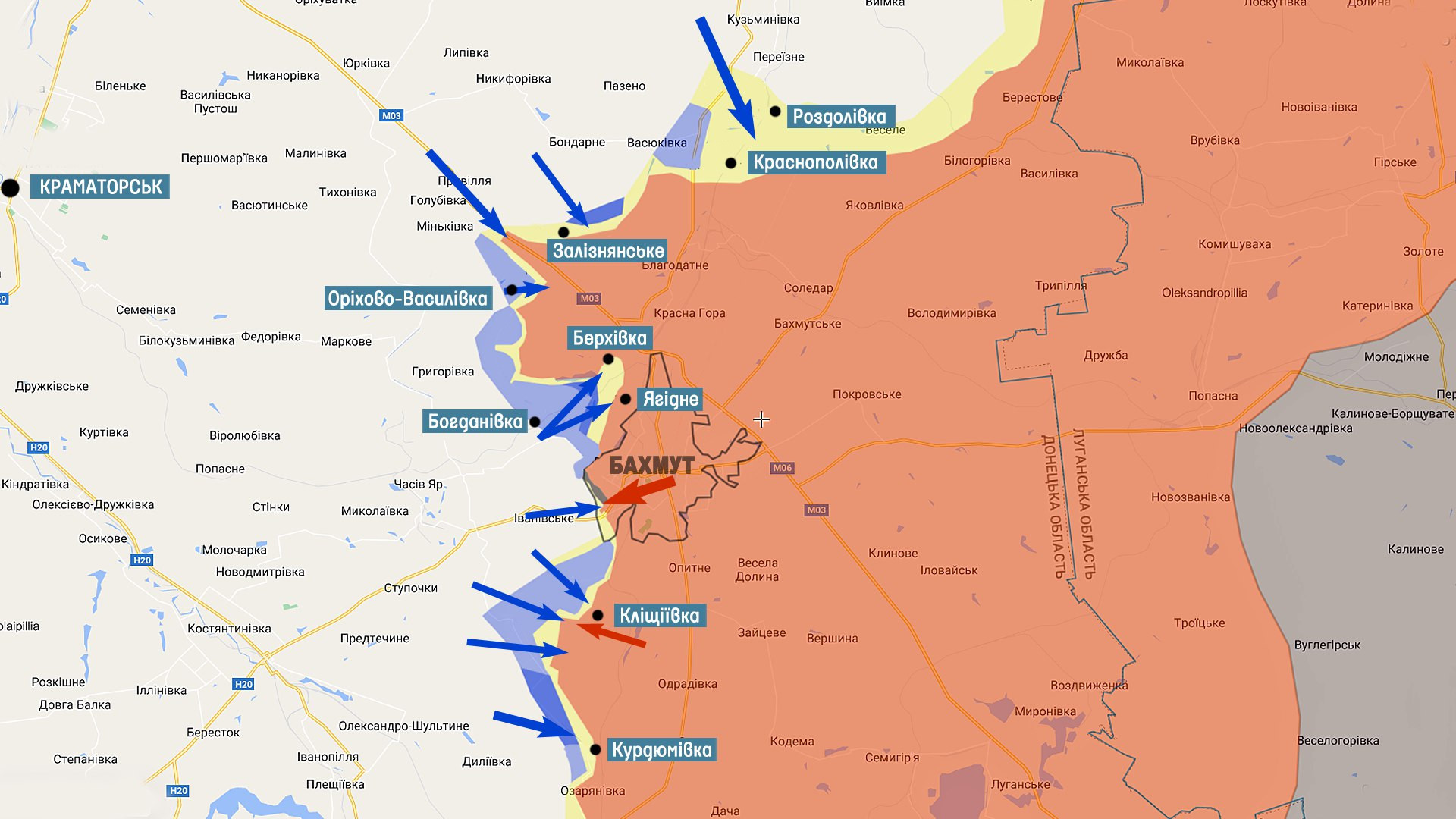
Our current objective is to secure the strategic high ground, this process is ongoing, but the enemy is now hysterically trying to hold the line of defense. Once we successfully encircle Bakhmut, we will proceed to capture all the dominant heights and utilize artillery to neutralize the Russian forces within the city and its outskirts. A new direction of attack has emerged, namely Rozdolivka, which will apply pressure on Soledar and provide an additional flanking approach to accelerate the encirclement of Bakhmut from 3 sides. Our ultimate aim is to create a trap for the enemy within the city.
The Ramstein meetings are a long-term effort. They decided to train our pilots on F-16s, to transfer additional air defense equipment, ammunition, additional armored vehicles - these are the further and insuring steps to support the Ukrainian Armed Forces. Much attention has also been paid to expanding the repair base and training our military in different countries, so that we can continue to prepare high-quality reserves for further actions to liberate our territory.
- News










